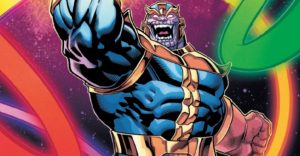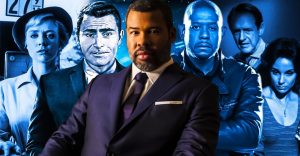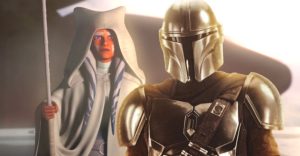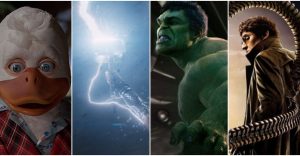Sleepy Hollow: 3 Things They Kept The Same (& 8 Things They Changed) From The Tim Burton Movie
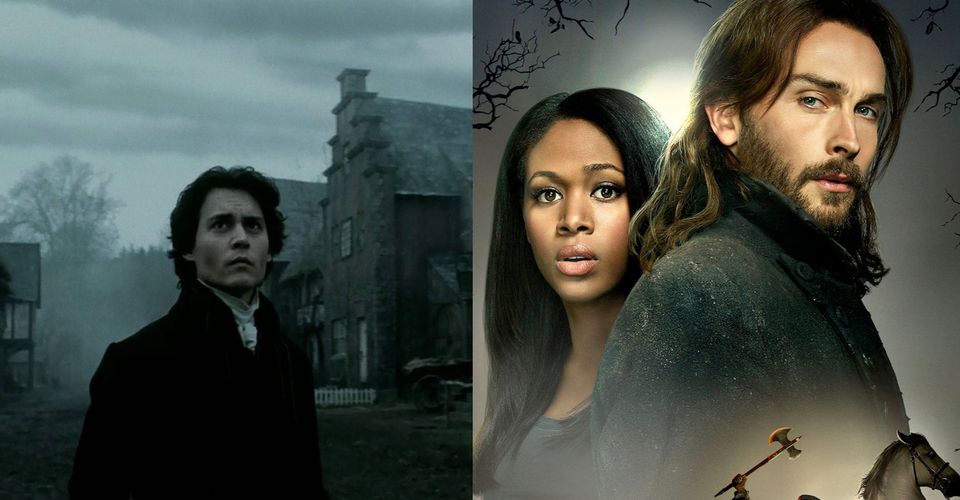
Sleepy Hollow came out of nowhere to crack out 4 seasons of seriously good demonic adventure. Most people at the time were only familiar with the most recent adaptation by Tim Burton starring Johnny Depp, so taking that iconic story and transplanting the key elements into modern-day allowed for some hellish fun. Tom Mison helmed the new series as the displaced Ichabod Crane alongside Nicole Behari as Lieutenant Abbie Mills in a sort-of Mulder and Scully fashion that clicked instantly.
While the original story of Sleepy Hollow and The Headless Horseman has been adapted plenty of times, these two versions are getting the comparison treatment. Besides the time difference, what survived through to the modern day setting of the series, what was unique to the movie, and what was introduced fresh to the series.
11 Different: Ichabod’s Toys

Movie Ichabod Crane is akin to a Sherlock or Batman. The amount of gadgets and tools he employs to seek the truth is right up there. A literal bag of tricks at his disposal allows him to conduct autopsies and detect chemical compounds. There’s also some ‘steampunk-VR’ looking goggles that let him examine evidence in minute detail. This fills Johnny Depp’s apparent contractual ‘must look as weird as possible’ quota for this movie.
Meanwhile, television series Ichabod Crane is hurled through time with little more than the clothes on his back and a stiff upper lip attitude. What he does have at his disposal is an eidetic memory. This allows him to have perfect recall of significant events and clues at all times. He essentially is a walking file cabinet of all the information they have or have ever had. Not ideal for getting a good nights sleep, but useful for persistent demonic investigations. These vastly different skill sets and ways of accessing them create a gulf between the two iterations.
10 Same: The Headsman’s Horse

In both the movie and the television show The Headless Horseman has a demonic steed that he rides into battle. In the movie, it’s a giant black horse named DareDevil , which he was said to love. On the television series his horse makes him literally one of the Horsemen of the Apocalypse, and so is even more vital to his head-chopping ways.
It’s probably the largest change you could make to a story centered around someone who is named for riding a horse (and being headless) but among the changes made between the two adaptations, this link is one of the notable ones intact.
9 Different: The Horsemans’s Original ‘Death’

In the winter of 1779 the movie Headless Horseman’s head was chopped off with his own sword after he was given away by two little girls (or at least one of the pair of them) while escaping from nameless pursuing soldiers. His head was thrown into his grave alongside him, and this allowed the events of the movie to take place when someone dug up that head and used it as leverage over him to commit the infamous slayings.
Conversely, in the series, it’s 1781, and Ichabod Crane himself beheads the Horseman in battle before succumbing to a responding ax slash across his chest. He went to triage where his wife Katrina, using some witchy wiles Crane wasn’t aware she had, preserved him to awaken alongside the Horseman down the line. Her coven hid the Horseman’s head separately from his body as a precaution as well. Thus we get our new take on the story and a decidedly different one than Tim Burton’s classic re-imagining.
8 Different: Ichabod’s Temperament

In the movie, Ichabod Crane is cowardly, squeamish, skeptical of the supernatural, and committed to finding a rational explanation for the happenings in Sleepy Hollow. He bumbles throughout the investigation until things are thrown in his face and more than once feints from sheer terror. Tim Burton had Depp play things this way to show Crane’s ‘ugly side’ as opposed to mangling his star’s face with prosthetics. Essentially he was made anything but the heroic leading man for this tale.
In the television series, Ichabod is knowledgeable, brave, and resolute in the face of danger and demonic forces. Despite being a fish out of water, he presses onward for both comedic and competent effect. His partner Abbie is the skeptic here, albeit a lot less than the movie Crane since she begins the series with some questions about her own past that need to be filled in and aren’t exactly conventional. Thus Crane is something of a hero and leader, a complete departure from the movie.
7 Same: Ichabod’s Vocation

In the movie, Ichabod begins as an investigator, forensic pioneer, and a constable in the New York police force. His calls for scientific methods to be used in criminal investigations is ultimately what gets him sent upstate to Sleepy Hollow to investigate those murders. He essentially is a ‘nerd’ of his time surrounded by jocks and simpletons who happen to be judges, priests and his superiors.
Television series’ Ichabod Crane was a Professor of History at Merton College, Oxford. He was then enlisted in the Queen’s Royal Regiment to fight the Patriots, but saw the injustice on display and turned spy. While both men reject their initial jobs in search or favor of the truth, they end up embroiled with supernatural forces while working for the law. Since both ultimately end up working with police against the forces of evil, let’s call this one a ‘same’.
6 Different: Ichabod’s People Person-ness

Movie Ichabod is fidgety, introverted, and uninterested in ‘people.’ He appears to have specialized himself into isolation. His tinkering and unique methods are almost used as a way to maintain his distance from people on purpose. Ironically he is ahead of his time while the television version is necessarily behind. Ichabod Crane from the television series is personable, endearing and whip-smart for someone out of his own time.
He associates with great historical figures and regular citizens alike seamlessly. With one being an introvert ahead of his time and the other an extrovert beyond his time, they essentially couldn’t be more different.
5 Different: Ichabod’s Appearance

Movie Ichabod is Johnny Depp sized, which is to say sleight and nerdy at maximum. Slim without being lanky and looking decidedly unathletic. He appears an intellectual force rather than a physical one. He does have the advantage of looking like he does in a tiny isolated village where ‘Emperor Palpatine’ is one of the other male suitors, so he stands out by default. Our hero is only marginally taller than Christina Ricci however. In fights, he’d better find a big stick to compensate.
Meanwhile, television Ichabod is ‘Tom Mison’ sized, coming in at a decisively more statuesque 6-feet tall. He possesses a fundamentally lithe and capable look about him. Throughout the series, he maintains his classic bearing of a gentleman warrior rather than adopting modern trends and that only enhances his presence. He seems capable with classic and improvised weaponry at the drop of a head too. Except for their shared ‘paleness’, the Crane’s are distinctly different.
4 Different: Sleepy Hollow Tone

The movie is decidedly going for morbid laughs. Things like heads spinning post-decapitation. The protagonist shivering under his covers and fainting. A witch shaking a bat in a basket and squeezing the blood from it for her incantations. Blood splashing on Ichabod’s face while cutting the tree of the dead. Even more fainting. It’s essentially a morbid cartoon at points. You’ll laugh, but while wincing or groaning. Essentially the classic Burton/Depp/Walken combo. Would you like frights with that?
The humor in the television series version comes primarily from the ‘fish out of water’ experience of Crane. That and the very engaging chemistry between the lead protagonists. Ichabod relies on upright ‘properness’ in the face of obscene violence and in dealing with the modern world. This creates an oddly fun tone that juxtaposes the humor with foreboding. The series takes it’s demonic antagonists fairly seriously in their moments, so they aren’t undercut even when our heroes point out the inherent craziness of things. Both media ultimately use humor to engage with the supernatural, but very different types and with varied outcomes.
3 Same: The Horseman’s Origin

In the movie, The Horseman was a Hessian mercenary sent to America by German Princes to keep Americans under the yoke of England in the Revolutionary War. There’s little reason why anyone wouldn’t send a filed-tooth madman like Christopher Walken against their enemies if the option is there, so that checks out.
In the television series, The Horseman plays a similar role albeit with an undercurrent of mysticism that our protagonist isn’t initially fully aware of. There’s magic at play before Crane encounters him whereas the movie version’s magic all takes place from post-beheading witchcraft. Close enough though, so point in the ‘same’ column.
2 Different: Ichabod’s Wife & Family

In the film, Ichabod’s wife is dead and his mother is dead by his father’s hands in an iron maiden. He arrives in Sleepy Hollow singularly alone. Only over the course of the film does he dabble with a burgeoning romance. He is introverted and concentrating on proving his methods are viable in a time before forensic investigation was accepted, thus not looking for romance until the village’s Katrina Van Tassel confronts him with the prospect.
In the televisions series, Crane’s wife is the Katrina in question. She is very much involved in proceedings and ‘somewhat’ alive. Without spoiling anything she’s critical as the story progresses in multiple ways. Her initial purgatory or limbo existence circles around the weekly plots and influences Crane’s mood and direction. Incredibly different takes here.
1 Different: Ichabod’s Faith And Belief

Movie Ichabod despises the bible and those who acquiesce to it blindly. This is due to his mother’s demise at the hands of his pious father. Thus he believes in sense and reason, cause and consequence, the scientific method, and abhors witchcraft and the supernatural. Only when directly confronted with it, for both good and ill, does he come around to their possibility of being tangible. He’s predominantly a skeptic.
In the series, Ichabod is quite open to faith and religiousness given his predicament and ‘time-travelishness.’ Abbie chides him “You really believe anything is possible?” Ichabod retorts “My own circumstance makes me open to the prospect.” We get plenty of flashbacks to him working with historical figures on supernatural or magical projects. This makes him quite accepting that the mysticism and lore of religion are plausibly linked or analogous to reality. That’s a much greater allowance than movie Ichabod is capable of before his direct exposure. Almost opposite takes going on with this final critical comparison.











